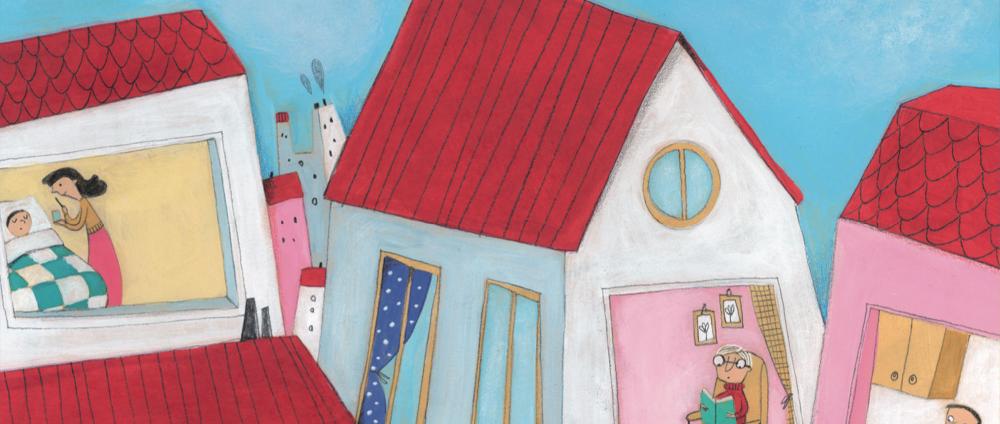
Exodus
- Remember that we, like the people of Israel, belong to God.
- Imagine how God's people felt as they were pursued by the Egyptians and then saved by God.
- Trust that God is powerful enough to care for us and remember some things that God has done for us.
- Express joy at belonging to such a powerful God.
Leader Reflection
The Bible has two main salvation stories, and they're deeply related to each other. The story of the exodus is the Old Testament salvation story, and, of course, the story of the cross and resurrection of Jesus is the New Testament salvation story. Just a hint of how they're related—when Jesus is transfigured on the mountain with Moses and Elijah in Luke 9, they discuss with Jesus his coming "departure" (Greek: exodus) in Jerusalem (Luke 9:30).
The story has been building to this moment for eleven chapters, beginning with Israel's enslavement, the call of Moses, the plagues, and finally, the death of Egypt's firstborn sons. The actual exodus is also soaked in ceremony and drama.
On the eve of Israel's departure, God institutes a memorial meal that will celebrate this moment of salvation for generations to come. The Passover, with its slaughtered lamb, fills the same position on the eve of Jesus' crucifixion.
Strangely, God does not lead the Israelites away from Egypt and toward the promised land by the most likely and natural route. Instead of heading due west, God leads them south along the Red Sea. When Pharaoh, unsurprisingly, changes his mind and begins to chase them with his army, the Israelites know that they're stuck, almost literally, between the devil (Pharaoh's army) and the deep blue (Red) sea.
Realizing their hopeless situation, the Israelites cry out to Moses, "Was it that there were no graves in Egypt that you brought us to the desert to die?" Back to the sea, seeing the dust of approaching chariots Moses finds the faith for his most shining moment. "Do not be afraid. . . . The Lord will fight for you!" Then Moses raises his rod over the roiling sea, and it spreads apart so the Israelites can cross on dry ground.
It's a jubilant story of deliverance, but it's also gruesome. Pharaoh's armies plunge after the Israelites, the water returns, and horses and their riders drown in the writhing waters. In the morning their bodies are strewn along the shore. So Miriam and the women sing: "I will sing to the Lord for he is highly exalted. Both horse and driver he has hurled into the sea."
This Old Testament story of salvation prefigures our own in Jesus Christ. We were enslaved to sin and death. Jesus came to be our Savior, but things looked hopeless when he was condemned and nailed to a cross. On Easter God opened the grave, and Christ's resurrection spells the defeat of the enslaving powers of sin and death. We too are redeemed through water, the water of baptism. God has now set us on our way to the promised land.
Nowhere do we experience this parallel more than at the Lord's Supper. Jesus says, "This is my body . . . this is my blood." No Passover lamb here because the very Lamb of God has been sacrificed for us, and his blood covers us and our households from the curse of sin and death. Like the Israelite children, our children may also ask, "What does this ceremony mean to you?" (12:26). And we answer, "It is the new covenant Passover. The Lamb of God was sacrificed on the cross to free us from our sins and give us eternal life."
What hopeless place have you been “between the devil and the deep blue sea”? What did you do and what did God do?
Why does God institute a sacred meal with each act of redemption? Do you experience that when you participate in the Lord’s Supper?
How do you feel about the passive role of the Israelites when Moses says, “The Lord will fight for you, you need only be still.” How is that true for you?
The story begins and ends with scenes of gruesome violence that are inappropriate for children this age. What they can grasp, and what you must emphasize, is that in these unusual and dramatic events, God’s power can save.
Children are mentioned at several points in the story as ones who have to understand what’s going on. Make sure your children see those key points and understand how children are integral to the community of faith and salvation.
Steps

Get Unlimited Access!
Sign up for DWELL Digital to unlock all online leader resources, printable pages and session plans.
Call 800-333-8300 or Request Access
Already a subscriber? Log In
Learn About DWELL
DWELL helps kids find their place in God's Big Story. Learn more about this popular and trusted children’s ministry curriculum.
